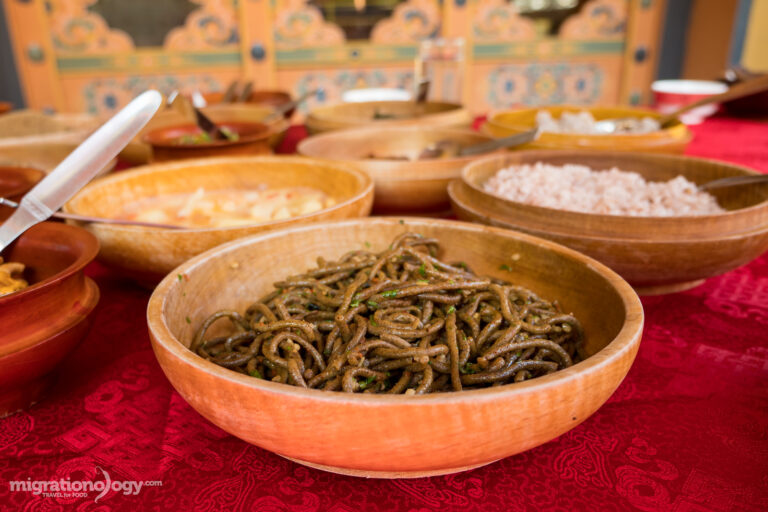Introduction: Bhutanese cuisine in context
Bhutan, a small landlocked country in South Asia, has a distinct culinary tradition that sets it apart from its neighboring countries. Bhutanese cuisine is characterized by its use of spicy chili peppers, rice as a staple food, and unique ingredients and flavors. The country’s cuisine is heavily influenced by its geography, culture, and religion, which have shaped its distinct culinary identity.
The role of geography in Bhutanese cuisine
Bhutan’s rugged terrain and fertile valleys have influenced its cuisine in significant ways. The country’s cuisine relies heavily on locally grown produce, including maize, rice, potatoes, and various vegetables. The mountainous terrain also makes it difficult to transport food items, which has led to the development of unique preservation techniques such as drying, salting, and fermenting. The country’s isolation has also contributed to the preservation of traditional recipes, which have been passed down through generations.
The importance of chili peppers in Bhutanese cuisine
Bhutanese cuisine is famous for its spiciness, and chili peppers are a staple ingredient in many dishes. Chilies are used not only as a seasoning but also as a vegetable in their own right. The country’s national dish, Ema Datshi, is made with chili peppers and cheese and is a favorite among locals. Bhutanese believe that the spiciness of chilies helps to stimulate the body and ward off illnesses.
Rice as the staple food in Bhutanese cuisine
Rice is the staple food in Bhutanese cuisine and is consumed at almost every meal. The country’s unique variety of red rice, which is grown in the fertile valleys, has a nutty flavor and is an essential component of many dishes. Bhutanese also consume a variety of wheat-based dishes, including noodles and bread.
Unique ingredients and flavors in Bhutanese cuisine
Bhutanese cuisine is characterized by its use of unique ingredients and flavors, including yak meat, wild mushrooms, and various herbs and spices. One of the country’s most famous dishes, Phaksha Paa, is made with pork, radish, and spicy chilies. Another popular dish, Jasha Maroo, is a chicken stew made with ginger, garlic, and Bhutanese chilies.
Differences in cooking techniques in Bhutanese cuisine
Bhutanese cuisine relies on different cooking techniques, including frying, boiling, and steaming. Many dishes are cooked in a traditional clay pot called a “dab chen,” which is heated over an open fire. The country’s unique preservation techniques, such as drying and fermenting, also influence the cooking methods used in Bhutanese cuisine.
Cultural and religious influences on Bhutanese cuisine
Bhutanese cuisine is heavily influenced by the country’s culture and religion. The country’s predominantly Buddhist population has led to the development of vegetarian and vegan dishes, which are commonly consumed during religious festivals. The belief in the balance of hot and cold foods has also influenced the way that dishes are prepared and consumed.
Conclusion: Bhutanese cuisine as a distinct culinary tradition
Bhutanese cuisine is a unique culinary tradition that has been shaped by the country’s geography, culture, and religion. The heavy reliance on chili peppers, rice, and unique ingredients and flavors sets it apart from other South Asian cuisines. Bhutanese cuisine continues to evolve, with a growing interest in incorporating modern cooking techniques and international flavors.

